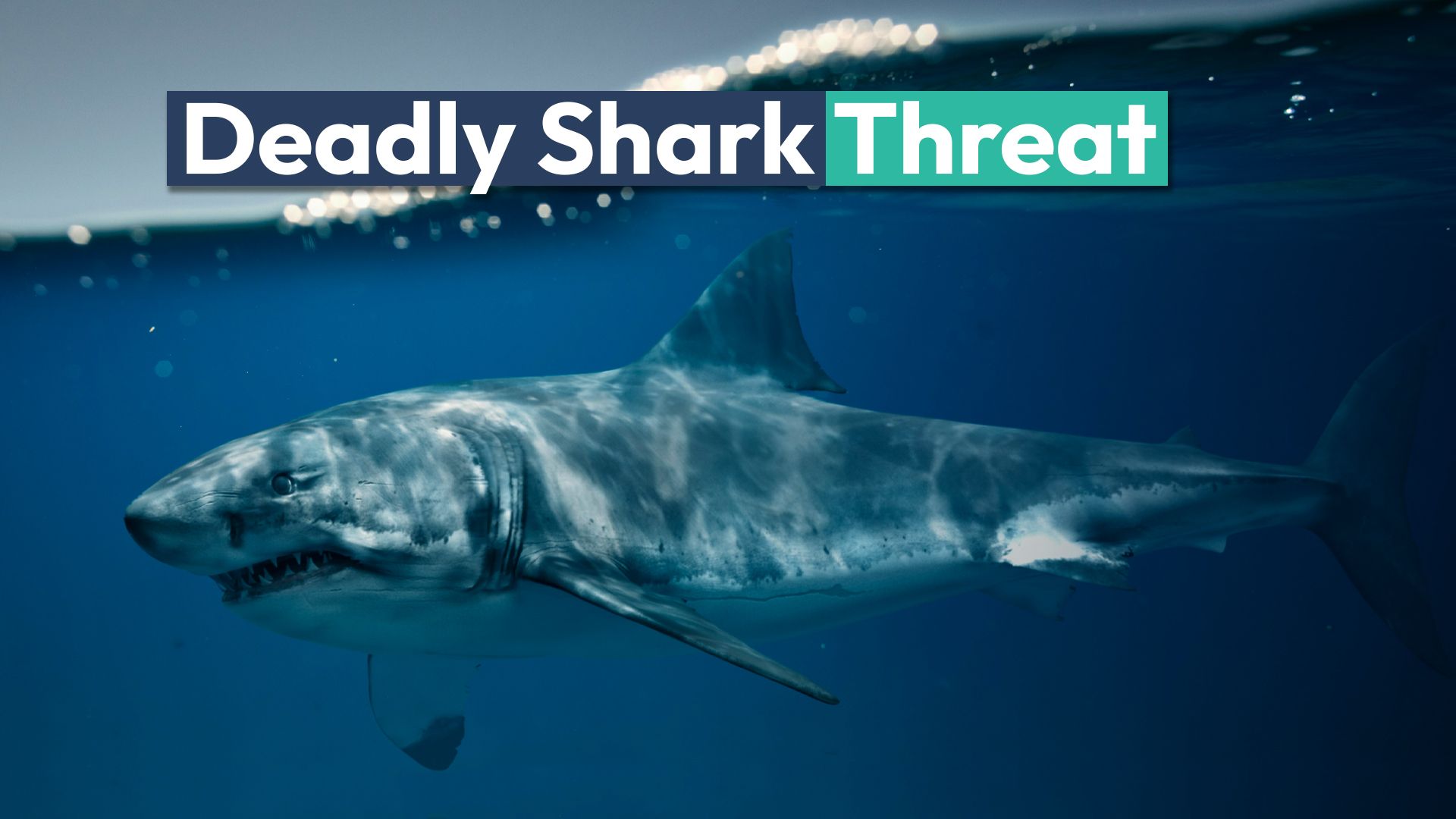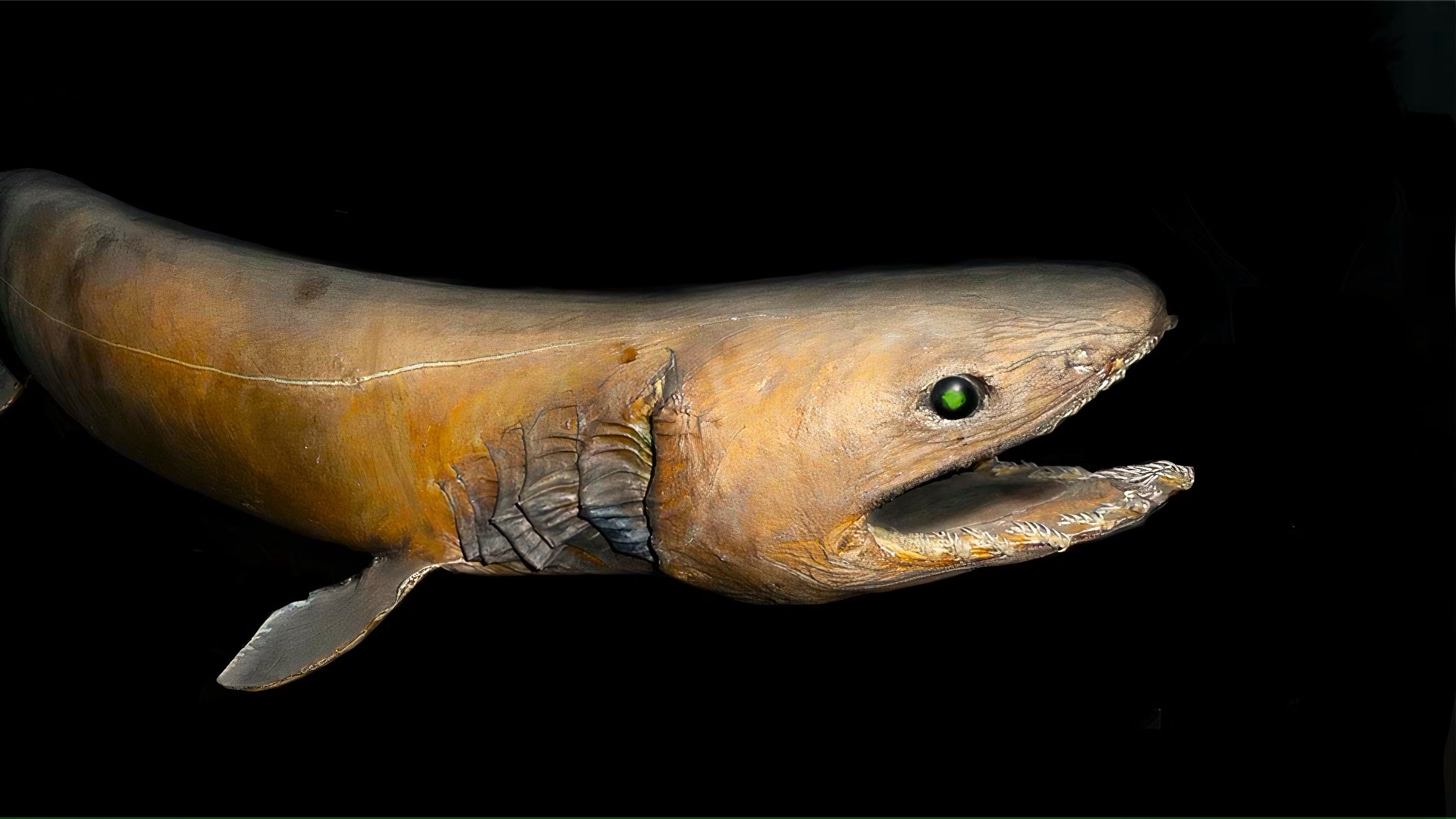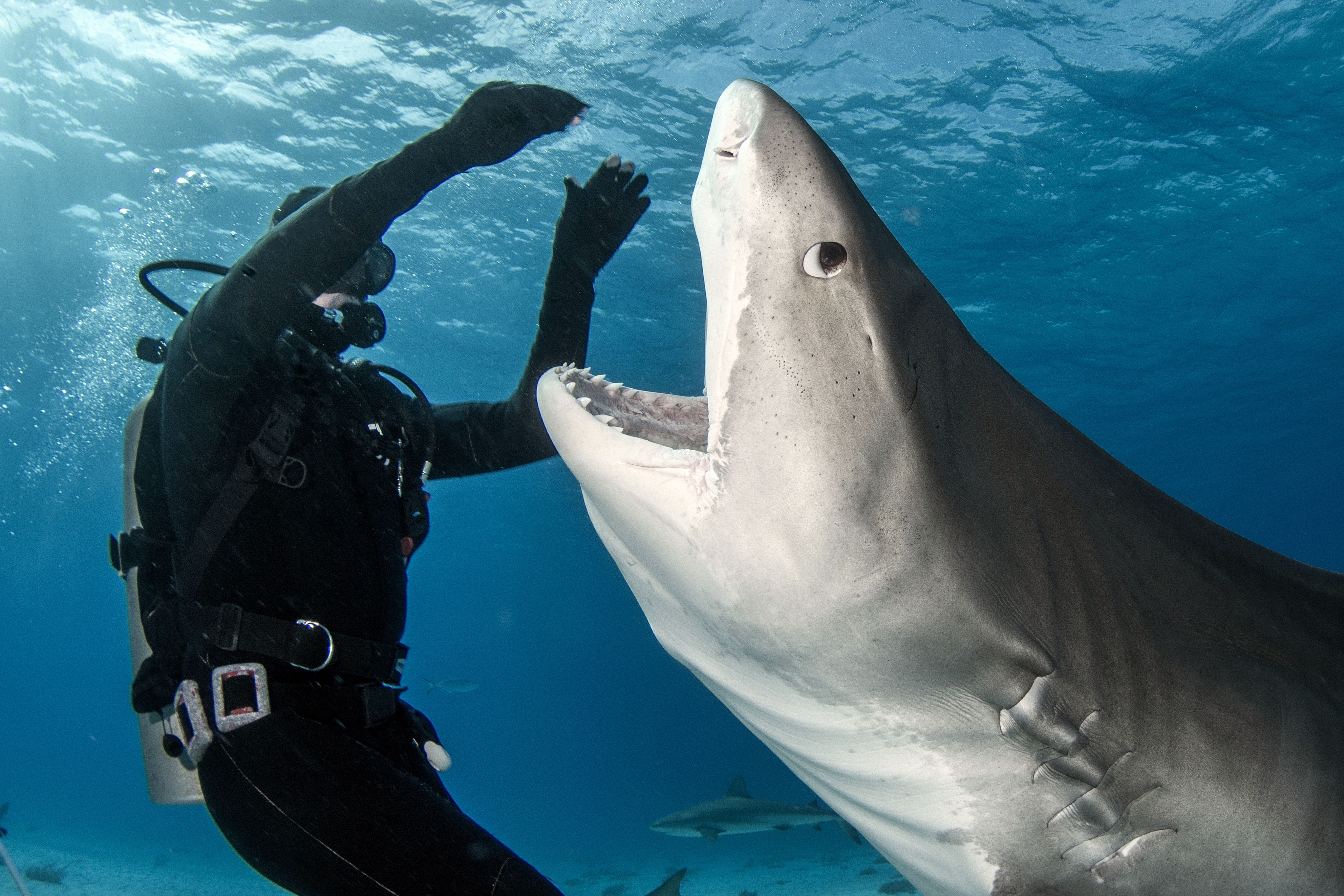There are some strange things found in the deep sea. Of the weirdest deep-sea creatures discovered, some species have survived for tens of millions of years and the marine life looks so bizarre, it is hard to believe they are real.
One such creature could be very elusive. The deep-sea “monster” is older than dinosaurs and was even captured in chilling video footage that went viral because it stalked a sub.
Many could by no means have heard of this large predator of the deep. Nevertheless, given it’s a threatened species, extra have to know in regards to the bluntnose sixgill shark. With out assist, the potential of it going extinct could be very actual.

Associated
Something Strange Is Killing Great White Sharks In The U.S. & Canada
Nice white sharks are washing up on seashores trying unhurt, leaving researchers to surprise what’s killing them.
Scientists Captured Chilling Video Of Bluntnose Sixgill Shark As It Was Tagged
The bluntnose sixgill sharked appeared to stare immediately at scientists who had been making an attempt to tag her 1,300 ft under the floor of the ocean
Think about staring down historical past… actually. That is what occurred to a number of scientists as they captured a chilling video of a bluntnose sixgill shark in a submersible into the deep.
In 2020, scientists with OceanX, along with the Cape Eleuthera Institute, came up with a plan to be the first to tag the bluntnose sixgill shark in its deep-sea environment. Nobody knew if they might encounter certainly one of these sharks, not to mention if they might tag one. However, in a quest to aim to take action, the staff, headed by Florida State College’s Dr. Dean Grubbs, took a submersible that went greater than 1,300 ft under the ocean’s floor.
Earlier tagging of the bluntnose sixgill shark was solely doable by bringing the shark to the floor, bringing a number of stress to the shark. By going into the shark’s atmosphere, there was no gear essential to seize them. All that was wanted was a bit curiosity from the shark to get a tag correctly positioned on the shark.
Happily, the OceanX submersible encountered such a shark. The feminine bluntnose sixgill shark swam across the submersible, inspecting each inch of it. At one level, the scientists even thought the shark was going to completely move the submersible around.
“She’s pushing the sub. She’s bumping the sub. She’s gonna scratch it!” – Scientist on the OceanX submersible
The feminine bluntnose sixgill shark was 20 ft lengthy and had a head three ft large. Scientists had been in awe of the shark in entrance of them.
“I am shaking,” a scientist on the OceanX submersible stated. “It was like, proper right here!”
“This can be a monster! She is big!” – Second scientist on the OceanX submersible
Whereas it appeared that the bluntnose sixgill shark was not going cooperate to be tagged, on condition that the large shark was persistently stomach aspect towards the gun used to tag the shark. Ultimately, nevertheless, the bluntnose sixgill bought in an ideal place to have the ability to be tagged.
The video exhibits simply how large these sharks can get. Moreover, the big eyes of the bluntnose sixgill look nothing just like the sharks most are conversant in, giving the shark, which has been round longer than the time of the dinosaurs, an much more otherworldly look.

Associated
The Incredible Shark That Hasn’t Changed In 80 Million Years
Whereas it could not reside so long as another sharks, this shark has managed to look and reside the identical approach because the age of dinosaurs.
Bluntnose Sixgill Shark Is Older Than Dinosaurs
Bluntnose sixgill sharks have been round for greater than 200 million years
The bluntnose sixgill shark is older than the dinosaurs, but not many have heard of the large shark that lurks close to the underside of the ocean because it has for greater than 200 million years.
In contrast to some creatures that have not evolved for millions of years, the bluntnose sixgill has advanced a number of instances. That is what has allowed the shark to outlive a number of mass extinctions.
At the moment, the large shark, measuring in at 18 to 20 feet and weighing up to 2,200 pounds, might be present in oceans world wide the place there are heat and temperate waters. These oceans embody:
- Pacific Ocean
- Atlantic Ocean
- Indian Ocean
The bluntnose sixgill shark was first discovered in 1788 by Pierre Joseph Bonnaterre. It’s associated to a different prehistoric shark that has been alive since Christopher Columbus was born and has no predators.
An absence of predators and an considerable meals provide is what has allowed the bluntnose sixgill shark to outlive so long as it has. Extra spectacular nonetheless, are the few encounters that the shark has had with people which have led to assaults.

Associated
Nice white sharks are fearsome creatures recognized for his or her large dimension, however there’s one shark that’s much more deadly, and it lives within the U.S.
Bluntnose Sixgill Sharks Are Not A Risk To People
Bluntnose sixgill sharks haven’t attacked a human because the 1500s
The bluntnose sixgill shark could also be an intimidating presence given its dimension. Nevertheless, not like the nice white, tiger, or bull sharks, the bluntnose sixgill shark will not be recognized for attacking people.
For the reason that 1500s, there has only been one bluntnose sixgill shark attack on a human. From what is thought of the sharks, they won’t assault until they’re provoked. They don’t thoughts being within the presence of people, probably due to their curious nature.
Nevertheless, this doesn’t imply that the bluntnose sixgill likes to be touched. It has been reported that these within the neighborhood of the sharks that attempted to the touch them had been snapped at.
In truth, persons are extra of a risk to the bluntnose sixgill shark than the shark is to individuals. For this reason conservation efforts are underway to avoid wasting the shark from turning into part of the endangered species record sooner or later.
Bluntnose Sixgill Sharks Are A Close to-Endangered Species
Bluntnose sixgill sharks have a declining inhabitants thanks being victims of bycatch
Whereas bluntnose sixgill sharks usually are not a risk to people, people are a risk to the sharks. For this reason the bottom-dwelling sharks are a near-endangered species, according to the IUCN.
It’s unknown how many bluntnose sixgill sharks are swimming in the oceans today, given their elusive nature and the depths at which they reside, in line with The Marine Detective. What is thought is that their inhabitants is declining.
How it’s acknowledged {that a} species has a inhabitants that’s reducing, particularly if it’s a bottom-dwelling or elusive species is by what number of are picked up as bycatch. With fewer bluntnose sixgill sharks being picked up in nets, that may be a clear indication that populations usually are not sustaining themselves.
“The first threats recognized for these species are entanglement and bycatch. Different threats recognized embody air pollution, habitat loss or degradation, local weather and oceanographic change, and harassment. Historic threats included directed fisheries and entanglement/bycatch. Whereas these populations are migratory all through the northeast Pacific, it’s unknown whether or not threats occurring exterior of Canadian Pacific waters have an effect on these populations.” – The Marine Detective
Feminine bluntnose sixgill sharks don’t attain sexual maturity until they are between 18 and 35 years old. Consequently, if these sharks are caught as bycatch, future generations of sharks is not going to be born. This results in an additional drawback of decreased inhabitants and begins a slippery slope of a species making its approach towards extinction.
To assist bluntnose sixgill sharks stabilize their populations, ending fishing with nets that entrap them and don’t provide them a chance for escape is critical. However till a less expensive various is obtainable to those that depend on fishing as their supply of earnings, the bluntnose sixgill shark and different species will proceed to make up the 84 billion pounds of bycatch that are caught annually, solely to be tossed apart and trashed as a result of the species weren’t the supposed catch that makes a revenue for these within the fishing trade.



Recent Comments